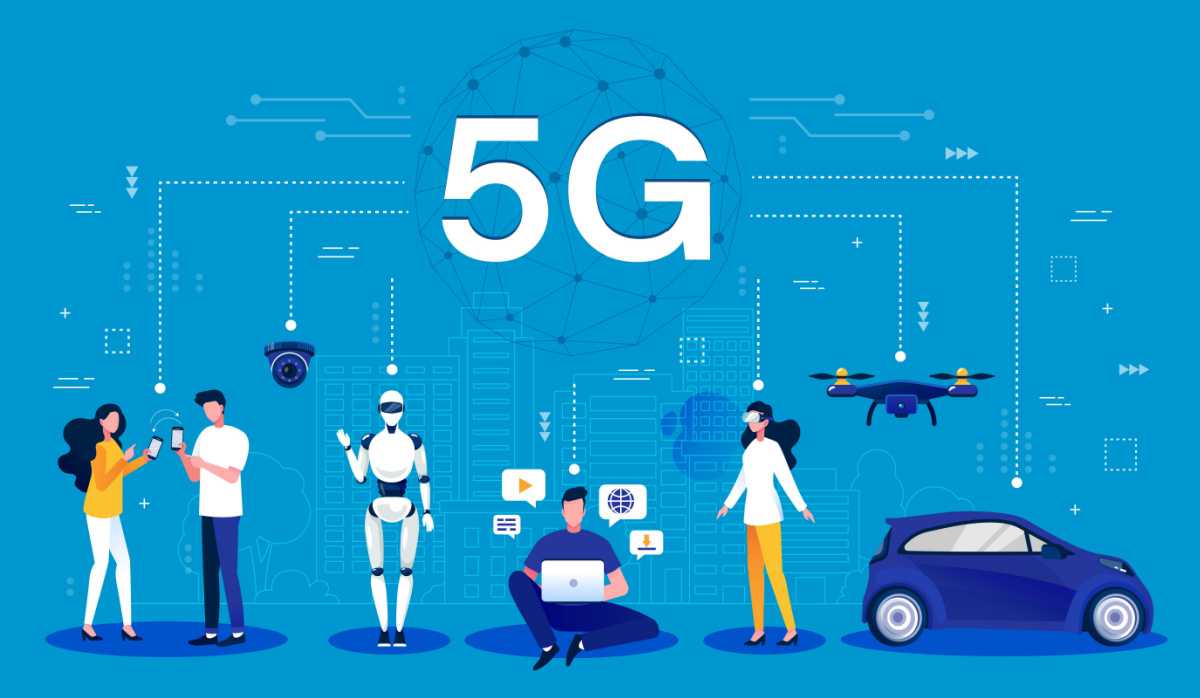The 5G network is the fifth generation of mobile networks, which is based on more advanced technology than 4G, 3G and 2G networks
The 5G network offers a number of advantages over previous networks, including faster connection speeds, lower latency and greater capacity.
What is the 5G network and how it works
The 5G network, acronym for 5th Generation, uses radio waves at higher frequencies compared to previous networks, which allow more data to be transmitted in a shorter period of time. In fact this technology, also known as fifth generation of mobile networksrepresents an advanced connectivity system designed for offer superior performance in speed, latency and energy efficiency.
Its introduction on Italian soil has taken place starting in 2019 with Vodafonewhich has distinguished itself as the pioneer in providing this innovative infrastructure in its mobile connectivity service offerings.
The 5G network it also uses a number of new technologiesincluding beamforming, which allows you to direct the radio signal to specific devices, and MIMO, which allows you to transmit data on multiple antennas at the same time.
Plus this network uses a series of cells, which are smaller and denser compared to the cells of the previous networks. 5G cells are placed at closer distances, which helps provide more uniform coverage and higher connection speeds.
What are the main features of 5G?
The main features of the 5G network are:
- Faster connection speeds: 5G network offers connection speeds of up to 10 Gbps, which are 100 times faster than 4G networks:
- Lower latency: 5G network offers latency of less than 1 millisecond, which is necessary for applications such as virtual reality and augmented reality;
- Frequency: While the 4G network operates at a frequency of 6 GHz, 5G networks mainly use frequencies between 30 and 300 GHz. The frequency, being an electromagnetic wave, propagates at a constant rate. A higher parameter (therefore a higher number of GHz) translates into optimal network performance and fast data transmission;
- Wave length: Unlike the 4G network with long waves, 5G has shorter waves. Short waves allow connections over long distances, using infrastructures with a very high data transmission frequency. Furthermore, wavelength and frequency are inversely proportional, so as frequency increases, wavelength becomes shorter;
- Greater capacity: The 5G network offers greater capacity than previous networks, allowing it to support more devices at the same time.
Benefits of 5G
The advantages of the 5G network are many, including:
- Better browsing experience: the 5G network allows you to browse the internet, download files and watch streaming videos faster and more smoothly;
- New applications: the 5G network allows the development of new applications, such as virtual reality, augmented reality and the Internet of Things;
- Greater energy efficiency: The 5G network is more energy efficient than previous networks.
The 5G network in Italy: which direction we are going
Dal 2019telephone companies began to implement the 5G infrastructure in Italy. Currently, the main cities of the country are covered by the 5G networkbut smaller towns present structural challenges that make it difficult to install the necessary infrastructure.
The pioneer in offering this service in Italy was Vodafonewhich introduced the fifth generation connection initially in the main cities such as Milan, Rome, Naples, Turin and Bologna, and then also extended to other locations.
Vodafone’s success was followed many other telephone operatorsamong which TIM, WindTre, Fastweb and Iliad. In addition to marketing the 5G network through mobile offers, these large operators have launched various projects across Italy to explore its applications in different sectors.
















Leave a Reply
View Comments